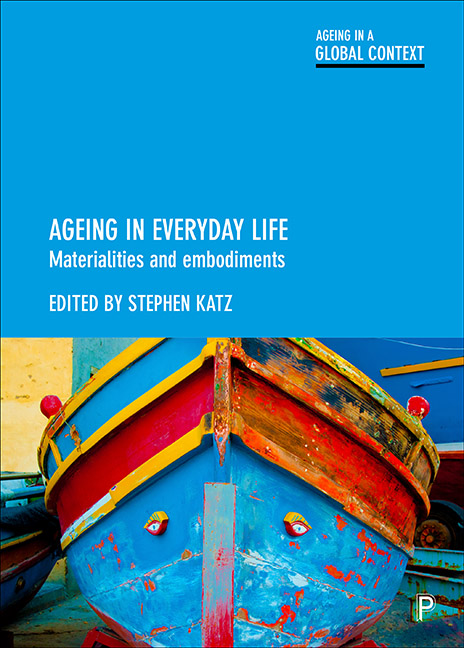Eight - Ageing bodies, driving and change: exploring older body–driver fit in the high-tech automobile
Published online by Cambridge University Press: 22 April 2022
Summary
Today's world of automobiles, in its wondrous integration of mechanical and digital technologies, including the prospect of self-driving cars, is far removed from anything traditional manufacturers or drivers could have imagined. The embedding of advanced vehicle technology into the automobile has resulted in vehicles that are more akin to ‘hightech devices on wheels’. The term advanced vehicle technologies (AVTs) refers to sophisticated computer and electronically mediated systems that assist drivers with driving-related tasks, provide warnings to prevent a crash, and, at times, assume control over driving. As outlined in Canada's road safety strategy 2025, AVTs, which include back-up cameras and adaptive cruise control, are considered to have the potential to improve driver safety (Canadian Council of Motor Vehicle Administrators, 2016). Unsurprisingly, in a context whereby communities are increasingly populated by older drivers, gerontologists, transportation experts and human factors specialists have all heralded AVTs as particularly relevant for older people – viewing AVTs as offering the means to compensate for age- and health-related changes that can affect driving (see, for example, Dickerson et al, 2007). Scholars have thus begun to assess whether AVTs can redress critical driving skills among older drivers. A recent literature review provided evidence to support the claim that AVTs can assist older drivers in ways that improve their behind-the-wheel performance (Eby et al, 2016). While safety and driving performance are key public concerns, driving also features strongly in everyday lives, in feeling and achieving independence, and in social mobility, as well as simply in the experience of movement in and around communities. Driving involves a somatic intimacy between the older body, person, machine, the means to meet daily needs (for example, fetching groceries and so on) and larger links with society and/or social contacts (for example, socialising). And yet, less attention is devoted to older drivers as ‘agents’ and/or to understanding the experiences of driving. Employing qualitative interviews, we focus on the experience and changing relationship between the older driver and the technological vehicle. We explore the ‘fit’ between an older driver body and a high-tech automobile from an embodied and phenomenological point of view.
The first part of this chapter explains the theoretical basis of the study as we explore how phenomenological and sociological perspectives on the body contrast with the dominant human factors approach that guides scientific investigation on ‘user’ experience and driver characteristics in relation to advancements in human–machine interfaces.
- Type
- Chapter
- Information
- Ageing in Everyday LifeMaterialities and Embodiments, pp. 145 - 162Publisher: Bristol University PressPrint publication year: 2018



